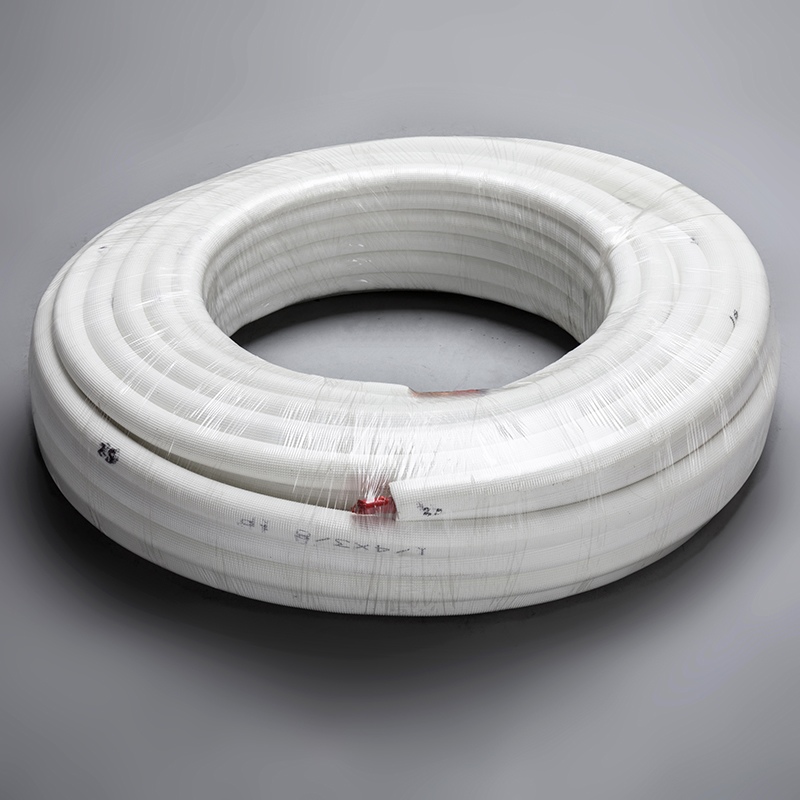How to Fix Ice Forming on Air Conditioner Pipes

Ice forming on air conditioner pipes isn’t just a minor inconvenience—it’s a sign of trouble. When ice builds up, your AC struggles to cool your home effectively. This wastes energy and can even damage the system over time. If you notice ice, turn off the AC right away and switch the fan to "ON." This helps thaw the ice naturally and prevents further harm.
🧊 Tip: Acting quickly can save you from costly repairs and keep your AC running smoothly.
Key Takeaways
Turn off your AC right away if pipes have ice. This stops more damage and lets the ice melt safely.
Check and change air filters every 1–3 months. Clean filters help air move better and stop ice from forming.
Get your AC checked by experts once a year. They can find problems early, keep it working well, and prevent ice.
Immediate Steps to Fix Ice Forming on Air Conditioner Pipes
Turn Off the Air Conditioner
If you see ice on air conditioner pipes, turn it off. Running it with ice can break parts like the compressor. Turning it off stops more damage and lets it rest. Leave it off for a few hours so the ice melts. This is important before checking or fixing anything.
⚠️ Important: Running your AC with ice can break it and cost a lot to fix.
Switch Thermostat Fan to 'ON'
After turning off the AC, set the fan to 'ON.' This moves warm air through the system to melt the ice. It’s an easy way to help the ice go away. Don’t use 'AUTO,' as it won’t keep the air moving. Keeping the fan on helps the AC recover faster and avoids more problems.
Let the Ice Thaw Naturally
Be patient and let the ice melt by itself. Don’t use things like hair dryers or hot water, as they can break the pipes. Letting it melt naturally is the safest way. Clean up any water to avoid slips or damage. Once the ice is gone, you can find and fix the problem.
🧊 Tip: Letting the ice melt naturally keeps your AC safe from harm.
Causes of Ice Forming on Air Conditioner Pipes
Clogged Air Filters
When the air filter is full of dust, it blocks airflow. This makes the evaporator coil too cold. Moisture freezes on the coil, creating ice. If the filter is very dirty, no air reaches the coil. This makes the problem worse. Check and change your filter often to stop this.
🧊 Did you know? A dirty filter wastes energy and lowers your AC’s performance.
Low Refrigerant Levels
Low refrigerant is another reason for ice on air conditioner pipes. When refrigerant is low, system pressure drops. This makes the temperature fall, freezing the coils. Leaks or incorrect charging often cause low refrigerant levels.
Source | Explanation |
|---|---|
MSP Plumbing Heating Air | Low refrigerant lowers pressure, causing freezing temperatures. |
333 Help | Leaks or wrong charging lead to ice buildup. |
ACHR News | Low refrigerant freezes coils, showing low charge levels. |
Dirty Evaporator Coils
Dirty evaporator coils can also cause ice. Dirt blocks airflow, stopping heat absorption. This makes the temperature drop below freezing. Over time, this can harm the compressor and raise energy costs.
Dirt on coils blocks airflow, causing ice.
It also makes the AC use more power, costing more money.
Restricted Airflow
Anything blocking airflow can make ice form in your AC. Closed vents, blocked ducts, or furniture near vents can cause this. Without airflow, the coil can’t absorb heat and freezes. Keep vents and ducts clear for smooth operation.
🚪 Quick Tip: Move furniture and curtains away from vents for better airflow.
Fixing the Causes of Ice Forming on Air Conditioner Pipes
Clean or Replace Air Filters
A dirty air filter is a common cause of ice. Dust blocks airflow, making the coil too cold. Check your filter often to avoid this. If it looks dusty, change it right away. Experts say to replace filters every three months. This keeps airflow steady and stops ice from forming.
Dusty filters block air, causing frozen coils.
Regular care helps your AC work better.
🛠️ Tip: If changing the filter doesn’t help, check the coils for dirt.
Inspect and Clean Evaporator Coils
Dusty coils can also make ice appear. Dirt stops heat from being absorbed, freezing the moisture. Turn off your AC and clean the coils gently with a brush or cleaner. If the dirt won’t come off, call a professional for help.
🧽 Quick Tip: Clean coils save energy and stop ice problems.
Check for Airflow Blockages
Blocked vents or ducts can stop air from moving. This makes the coil freeze. Look around your home to ensure vents are clear. Also, check outside for leaves or debris near the condenser unit.
Blocked vents stop airflow, freezing the coil.
Clear vents keep your AC running smoothly.
Seek Professional Help for Refrigerant Issues
Low refrigerant needs expert care. HVAC technicians can find leaks and refill refrigerant. They also balance the system to stop freezing. Regular checks by experts can prevent costly repairs.
Experts check refrigerant to stop freezing issues.
Early fixes avoid ice and save money.
🧑🔧 Pro Tip: Get yearly maintenance to catch refrigerant problems early.
Preventing Ice Forming on Air Conditioner Pipes
Schedule Routine Maintenance
Regular check-ups keep your AC in good condition. Professionals can find small problems early. They clean coils, check refrigerant, and ensure smooth operation. This helps stop ice on air conditioner pipes and keeps your AC efficient.
🛠️ Pro Tip: Get maintenance once a year, before summer starts.
Replace Air Filters Regularly
Dirty filters often cause ice to form. Blocked filters reduce airflow, freezing the coil. Changing filters often keeps air moving and prevents ice.
Dirty filters block air, freezing the coil.
Ice forms when moisture freezes on the coil.
Clean filters keep air flowing and stop ice.
Steps to follow:
Look for dirt on your air filter.
Replace it if it’s dirty.
Keep air ducts clear of blockages.
🧽 Quick Tip: Change filters every 1–3 months based on use and air quality.
Optimize Thermostat Settings
Thermostat settings affect how hard your AC works. Very low temperatures can overwork it, causing ice. Adjusting the thermostat when away reduces strain. In winter, good settings prevent frozen pipes.
🌡️ Tip: Use moderate settings for comfort and efficiency.
Seal Air Leaks and Ensure Proper Insulation
Air leaks and bad insulation make your AC work harder. This can lead to ice problems. Check for gaps around windows, doors, and ducts. Seal them with caulk or weatherstripping. Good insulation keeps your home cool and reduces AC strain.
🏠 Note: Proper insulation stops ice and lowers energy costs.
Ice on air conditioner pipes means bigger problems need fixing. Follow steps to solve it and stop it from happening again. Keeping up with maintenance is very important. Studies show that tuning HVAC systems makes them work better and saves money. If the issue doesn’t go away, call an expert for help.
Project Title | Technology Focus | Profile |
|---|---|---|
Steam System Balancing and Tuning for Multifamily Residential Buildings | HVAC systems, steam heating distribution system and controls | A study by The Partnership for Advanced Residential Retrofit team found ways to improve steam systems. They tested air venting, radiator vent changes, and boiler upgrades to save costs and boost efficiency. |
FAQ
What should I do if ice keeps forming after following the steps?
If ice keeps forming, call a professional HVAC technician. They can inspect your system for deeper issues like refrigerant leaks or damaged components.
How often should I replace my air filter to prevent ice?
Replace your air filter every 1–3 months. If you have pets or allergies, check it monthly to ensure proper airflow and avoid ice buildup.
Can I use a hairdryer to melt the ice faster?
No, using a hairdryer can damage the pipes. Let the ice thaw naturally or use the fan setting on your thermostat to speed up the process.
🧊 Quick Tip: Always prioritize safety and avoid shortcuts when dealing with ice on your AC pipes.


